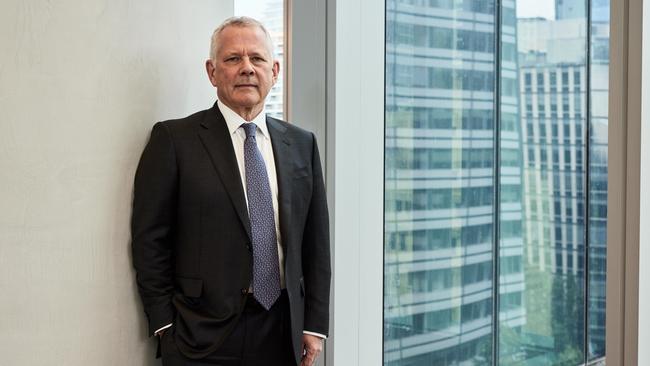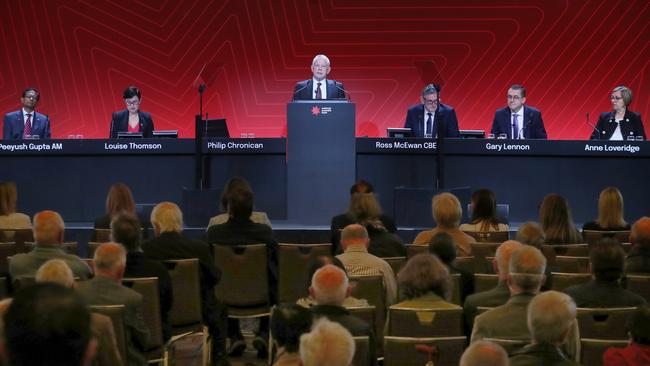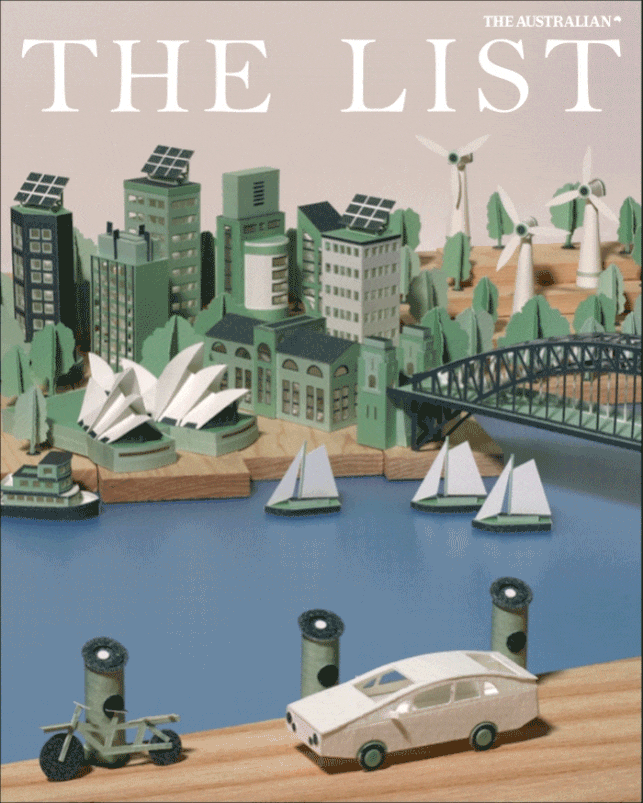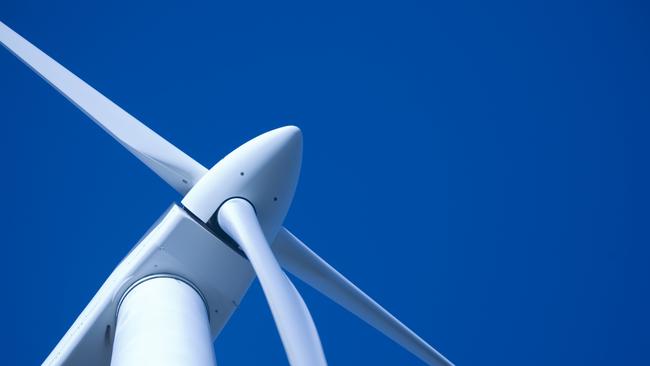Green List: How this banker changed the conversation
Given the pressure building on the big four banks around their so-called dirty loans, National Australia Bank chairman Philip Chronican figured they had little choice but to evolve.

The way National Australia Bank chairman Philip Chronican sees it, banks had to reset the conversation.
For years pressure had been building on the big four banks around their so-called dirty loans. With billions of dollars in exposure to carbon-intensive projects such as coal mining or oil and gas, banks were being painted as the ones really fuelling the heavy polluters.
Even though it was just a fraction of their entire lending books, customers were getting uneasy, and it was starting to play out among shareholders.
Some big fund managers were beginning to link up with smaller green-focused investors, looking to force change on banks from the outside. Others, such as our big superannuation funds and global giants including BlackRock and State Street, were piling on pressure. Every AGM became a lightning rod for protests. Even some branches were being targeted by activists.

Chronican, whose four-decade career includes executive roles at ANZ and Westpac, says banks long recognised more needed to be done on climate. But only piecemeal strategies were in place as the drums started beating about their exposure to coal and gas.
“We were in a reactive mode,” Chronican says.
“We knew that climate change was real but federal government policy was somewhat ambiguous. At that stage, the federal government hadn’t signed up to a net-zero target although globally, we could see that that was the emerging standard.”
“We seemed to be getting caught in a bit of a trap. But if you’re truly going to have a transition, certainly to a net-zero world, you’ve actually got to think differently about how the economy operates.
“If we want to change the debate, we have to be more on the front foot in terms of painting a picture of what the world needs to look like.”
Tipping point
This tipping point drove a landmark study produced by NAB with Deloitte Access Economics that looked at the financing challenge required to prepare Australia’s economy for growth in a low-emissions world.
The report, All Systems Go, was released last July and calculated that $420 billion in direct new investment was needed in the next three decades for Australia to hit its net-zero emissions targets.
Bigger still is the estimated $4 trillion needed for
new investment to prepare four critical industries – energy; transport and mobility; mining and manufacturing; and agriculture – for a low-carbon economy. Combined the four areas represent 90 per cent of Australia’s carbon emissions.

Alongside this new investment is the need for a huge reallocation of capital away from emissions-intensive activity and into new low-emissions economic systems needed to grow and create jobs. In both new capital and influencing fund flows, banks will play a central role, including influencing major investment decisions.
Chronican describes climate change as one of the “most significant long-term challenges and opportunities of our time”.
The landmark report labelled this Australia’s “great reallocation” of capital, necessary to change nearly every aspect of the economy to be low or no emissions. The scale and short time available would be unmatched in any structural adjustment of a modern economy.
For perspective, Chronican points to the industrial revolution, which took almost a century to transform the world into an economy dominated by machines and industry. Australia’s path to net-zero of capital, the retooling of nearly everything we produce or consume to be low or no emissions, will take less than 30 years.
And just like the industrial revolution, if this transformation is done in the right way, it is expected to put Australia on a higher and more resilient economic trajectory. Failure to move puts the nation at risk of being stuck on a low-growth path in an economy with limited access to capital.

“If we want to change the debate we have to be more on the front foot in terms of painting a picture of what the world needs to look like,” says Chronican, who joined NAB as chairman in early 2019.
The report was part of this effort which highlighted that banks needed to do more than simply stop lending to coal miners. Rather they were needed to source the funds to pay for the massive retooling of the economy.
“It’s actually thinking about what it will take to rebuild an economy,” Chronican says.
The Deloitte report armed Chronican and NAB with a framework to be able to talk about the positive elements of what banks can do in order to finance the shift to emissions-light activities.
In other words, banks were the ones powering the change to low- and zero-emissions.
“That’s a fundamentally different discussion from sitting there defending why while you’ve still got four or $500 million worth of thermal coal exposure,” Chronican says.
“I think there’s a significant positive part to the story, which is about rebuilding a transport network, rebuilding the way that commercial property gets constructed, rebuilding the whole energy generation and distribution system”.
“If you are going to do that, then it takes investment, not just disinvestment.
“The purpose of having this report was an attempt to set and reset the terms of the conversation in the public mind,” Chronican says.
Rewiring the economy
It was also a way for the entire investment community – including NAB’s own bankers – to see the constructive role banks can potentially play.
This extends from rebuilding a transport network or reinventing commercial property to rewiring the entire energy generation and distribution system.
“We still have a little work to do to get the general public into the same headspace, though we’ve certainly made significant progress in terms of the professional and investment community,” Chronican says.
Other major banks ANZ, Commonwealth and Westpac have also been doing their own work behind the scenes. Collectively the big four have more than $2.4 trillion in lending exposure across the economy which represents a big financial lever to drive change.
Chronican acknowledges that banks are still working through the “how” of getting to where they need. With the target for the economy of a 43 per cent reduction in carbon emissions by 2030, he says the challenge for Australia is not going to be the “easy stuff”.
“The other 57 per cent and everything still left to do in 2030 is all the stuff that’s hard for a reason, because the technology is not yet stable,”

For Australia, getting the legislated targets in place – both 2030 and the net-zero of 2050 – was the missing ingredient to drive change. Having them in place and legislated means as a nation “we are serious” and delivered the right signals for investment, he says.
That means there is a role for all of the financial sector, meaning that banks, super funds and private equity now have a road map laid out in front of them about what will need to happen.
There is another driver for change, too. Bank regulator APRA is demanding banks come clean about their potential financial risks due to climate change. This comes with an expectation that banks are lifting their capability around climate risk management.
Chronican says the conversations he has been having in the past year suggest the longer Australia puts off those renewable investments, the more costly it will be to the economy because we will be reinvesting in existing technologies that won’t last. In other words, it’s a low-productivity investment.
“To build a new fossil-fuel power station now would be a complete waste of investment dollars, because there is no role for it in 2050 or probably long before that to be honest,” he says.
Contrast this with only a couple of years ago when the then Morrison government was talking about building publicly funded coal-fired stations.
Learning curve
A lending shift also means a steep learning curve for banking staff. Here NAB has looked outside, working with organisations such as the Melbourne Business School and the Chartered Banker Institute to help with training its bankers.
It means bankers are making day-to-day assessments around loans to business clients needing to get across new technology so they can then make basic banking decisions such as understanding the risks, costs, benefits and pitfalls of individual projects.
For example, using green hydrogen for steel production might work on a smaller scale but it’s yet to be proven on a major commercial test. Banks are instinctively conservative and need to weigh up risks with expectations of generating a return on their loan.
“It’s important that our people understand what the economic and physical attributes of hydrogen are going to be? What are the options for the electricity generation sector? And how quickly can they occur? How do we manage the intermittency of renewables? Do we use storage opportunities like batteries? Or do you need some form of alternative baseload power generation to cover them? These are all technical questions about economic consequences,” Chronican says.
Banks are also working through the implications of their lending decisions. Stopping coal mining might work with Australia’s 2030 emissions reduction targets, but what if the company is an exporter to a lower-income country? How does a lending decision cascade through the global economy? Chronican admits that these are tough decisions.
It also comes down to avoiding economic shocks or disruptions to energy security. There needs to be a glide path for winding down investments, rather than simply walking away from clients. This is a position super funds and big investors are also moving towards.
As part of its own reworked policies, NAB will not finance new thermal coal-mining projects or take on new thermal coal-mining customers. Elsewhere, NAB won’t finance new or major expansions of coal-fired power plants. It will continue to support coal used in steelmaking, subject to tougher environmental, social and governance risks.

The bank’s oil and gas exposure is capped at $US2.4 billion ($3.4 billion). And while it takes a hardline view on supporting new oil projects, it will continue to lend to LNG projects and associated infrastructure. NAB will only consider new local gas extraction projects where it plays a role in national security.
More than 73 per cent of NAB’s total lending to the power generation sector is for renewables: hydro, solar and wind. Since 2015 NAB has written nearly $71 billion in new loans specifically for environment financing, meaning it has already exceeded the target to hit the figure by 2025.
Chronican says decarbonisation makes good business sense for customers. Soaring and often volatile energy bills mean businesses are looking to invest in renewables to help improve their own bottom line.
“Australia is at a critical juncture in its transition to a low-carbon economy. If we get it right, the opportunities are immense in protecting our environment and growing our economy,” he says.
“We’re going to make mistakes, we’re going to learn as we go. But what it says is that the more we get to understand this, the better position we’re going to be in”.



